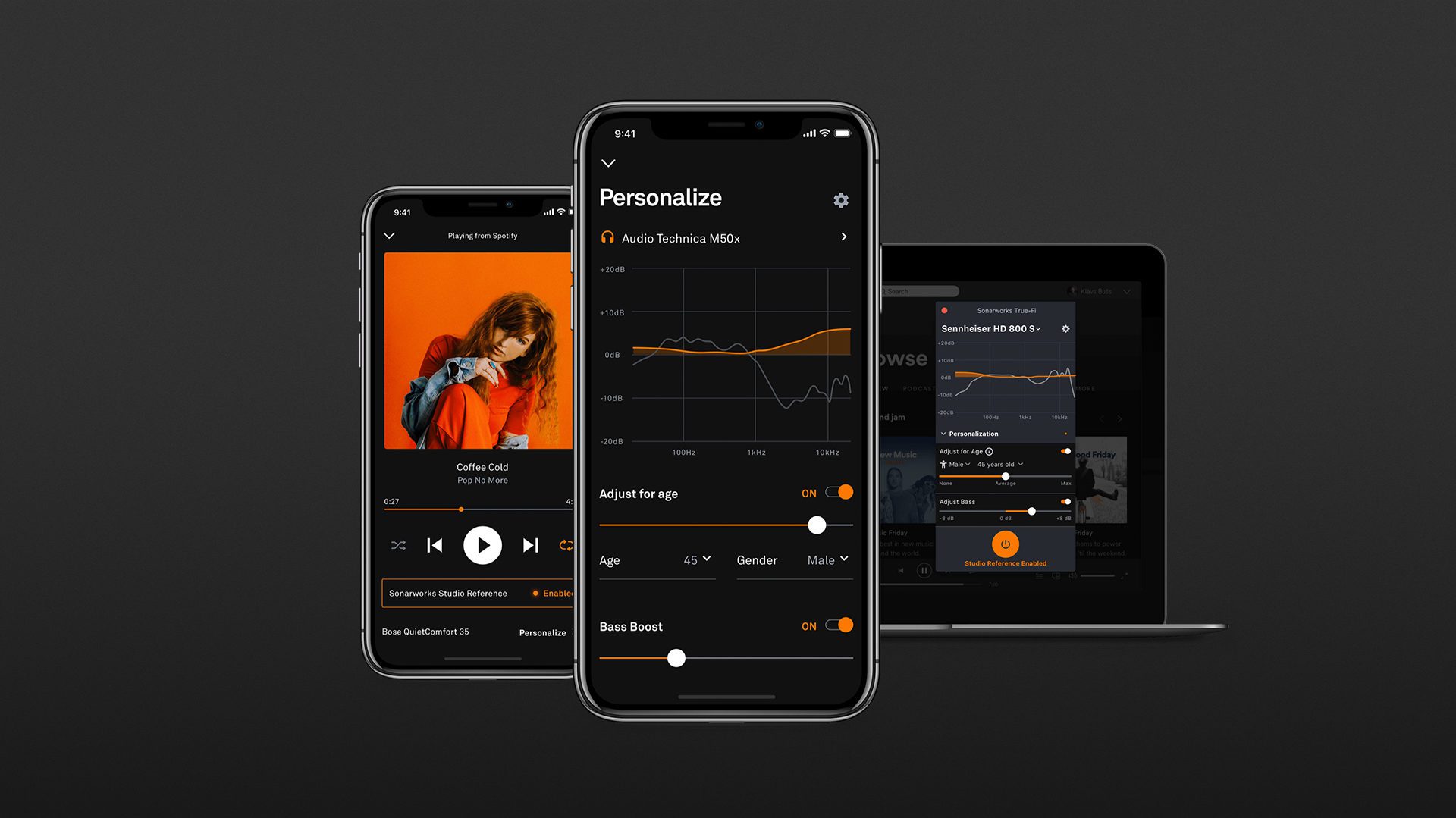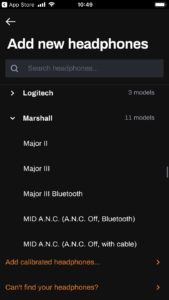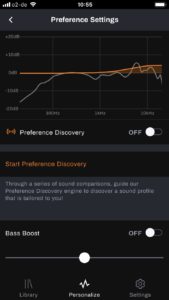True-Fi by Sonarworks pursues an interesting approach that enriches the enjoyment of audio with headphones for music lovers out there and sound creators. A compatible model can make the purchase of this software an absolute must, but the quality of the headphones is all important. A test run with the trial version or currently free app is therefore highly recommended. As an alternative, you could use the Reference 4 Headphone Edition (Affiliate link) from the same manufacturer for an extra charge of around 20 euros. There is also a plug-in function for music production, storable sound adjustments and, as a premium upgrade, a simulation of various speaker types.
True-Fi sets itself a tough mission in compensating for the weaknesses of headphones with innovative software to improve the listening experience. For audiophiles everywhere, this no doubt sounds an exciting prospect. Our test will see what’s possible with this software.
By design, loudspeakers and headphones are not usually linear transducer systems. In particular, if technical specifications have been limited due to budgetary reasons, results in this respect are never ideal.
In principle, it’s possible to compensate for errors in frequency response by means of electronic or digital frequency response equalisation. In fact, this also happens in almost any system with active electronics, including systems with wireless transmission. This means that the sound is improved off the bat by the manufacturer, yet in some cases is enhanced in quite a striking manner. However, this simply isn’t possible with passive systems. However, a corresponding correction can also be made in regards to the signal source. This is exactly what’s offered with True-Fi software, which is universally integrated into sound output drivers for Windows and macOS.
Once the weaknesses of a specific playback device have been established, True-Fi corrects the frequency response range with the aim of linearisation. Following this, the signal is passed to the output and thus, the headphones.
For some time, True-Fi has been available as an early access version for both iOS and Android smartphones and tablet devices. It is a temporary beta version for public testing and can be used free of charge until the third quarter of 2019. With it, you can access locally stored music files in the usual formats, although iOS will support sampling frequencies of up to 96 kHz in the future. What’s more, there is support for Spotify Premium. Unfortunately, the same is not true of Apple Music.
What Exactly is Corrected?
Digital systems now offer comprehensive options for sound correction. When it comes to the number of bands, there are almost no limitations. Sonarworks utilises so-called minimal phase FIR filters, which are certainly promising signs of success.
True-Fi is wholly dedicated to frequency response correction, leaving phase behaviour untouched. This is important in the case of headphones with multiple drivers. Also, a speaker simulation with crosstalk of channels is not the focus here.
Depending on preference, parameters can be adjusted. In the treble range, a variable elevation takes effect. This is intended to counteract a general decline in hearing ability in older listeners. In addition to the degree of enhancement, age and gender can be selected as parameters. Bass range can also be increased or decreased by up to ±8 dB.
Worth noting is respective correction can only apply to specific headphones. In this respect, True-Fi offers three possibilities:
- You select the desired model from an extensive list of popular products, currently clocking in at 300 different models, with both wired and wireless options included in this list. Here, the manufacturer uses typical measurements of standard models.
- You then send your headphones, which are measured individually. The correction profile determined is later referenced using a numerical code. Individual tolerances are taken into account, which according to the manufacturer improve the precision of correction from ±3 dB to ±0,9 dB. The price for this service is approximately 150 euros, including shipping costs.
- In addition to the software, Sonarworks offers an already measured headphone model as part of the overall package. Unfortunately, the selling price is more expensive than typical trade prices, even when you consider the value of the calibration service offered here.
Practice
For pure music enjoyment on your computer or a smartphone, you only need to ensure the software runs in the background with sound correction activated, or that it is used as a dedicated player. You can switch between unfiltered and corrected versions at any time you wish.
The app player lacks user-friendly functionality when sorting titles. On the other hand, the music as tested on my Mac played without issue via iTunes. There were only occasional issues with sound output with professional audio applications. These were not always satisfied with the Sonarworks driver in the signal path. For this application, Sonarworks offers a more comprehensive version called Reference 4 Headphone Edition (Affiliate link) which delivers more enhanced functionality.
Finally, you should express caution when using the driver in combination with headphones exclusively. Any speakers via computer outputs would otherwise falsify the frequency curve.
I was curious about the results possible with this system, especially as, even if the electronic corrections at the frequency level might make sense, the physics of the drivers and the construction of the housing cannot be influenced by such adjustments. What’s more, I was somewhat sceptical about the extent to which the manufacturer’s tunings and limitations, such as in the bass range, could be changed unintentionally.
For the purpose of this test, I used four devices. Sony’s considerably cheaper MDR-V150, with an individual profile selected, kicked things off. Here, the big shock was in the bass range and lower mids, with any overemphasis effectively removed. Furthermore, sound was altogether clearer. In fact, the bass range benefited from improved contours and tonality. The improvement also had a noticeable effect on other frequency ranges. As such, headphone speakers gained a clarity and openness in the higher frequencies, while the stereo panorama was better resolved. In comparison, the unfiltered signal sounded downright muddy and duller. Nevertheless, the MDR-V150 did not turn out to be a good choice of headphone. Following this, a Marshall model was selected. Here too, sound improvement is drastically noticeable, both on the computer and with the app. The uncorrected signal seems dull and lacking definition, while the corrected version is improved with more contours, an airier character and more detailed resolution. Things are generally improved across the entire frequency range from the lower basses to the central midrange, with voices and acoustic instruments such as grand pianos, right up to the top tiers. Sound is turned on its head, yet at the same time doesn’t sound embellished. Rather, weaknesses in the recording and mixing are even more noticeable.
After deactivating True-Fi in regards to the driver, it became clear that the original output really did sound so mediocre. As such, there’s no real need to refer back to a neutral listening scenario. This wasn’t something I expected.
Next in the test was the Sennheiser HD 660 S, another model on the list of compatible devices. Here, the listening impression was different. A pure grand piano composition sounded all but unchanged, although differences became all the more apparent in more elaborate productions. Here True-Fi handled the tuning rather discreetly in the bass range and, due to the slight age adjustment, also in the treble range. The central mid-range and the neutral range also moved a little into the foreground in the rock and EDM tracks sampled. The result sounded more open, while the original sounded warmer. In a repeated direct comparison, I drew the conclusion I would opt for the corrected version, as it retains harmonious character. Finally, the correction with the AKG K702, tested on an iOS version of the app, provided similar results as before. The differences between the original output and the corrected one are relatively minor, primarily affecting the bass elements and stereo panorama.
Technical specifications
- Ear couplingSoftware
What's in the box
- no accessories
Special features
- Sonarworks True-Fi available for 79 Euro as download: http://bit.ly/2J3BQ4k















































